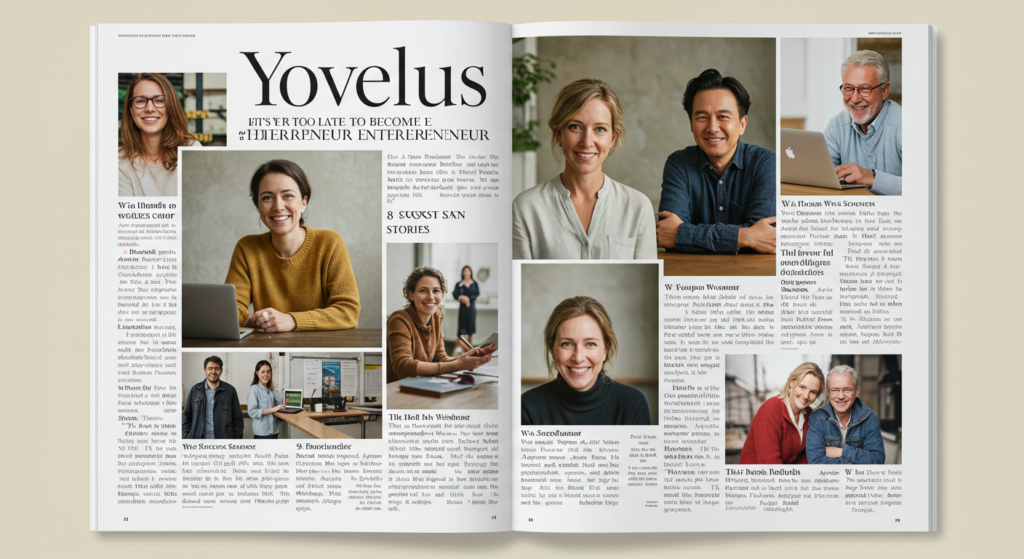It’s Never Too Late to Become an Entrepreneur: 8 Success Stories

Many people believe that entrepreneurship is something for young people and that they are too old to start a business. However, it is known that there is no right age to start a business and several renowned **entrepreneurs** only became successful after they were older, proving that the word “old” does not exist for those who always remain young at heart. Believing this, we have selected **8 examples of successful entrepreneurs worldwide** to prove that it is never too late to start a business.

1. John Pemberton
American **John Pemberton** is the creator of the **Coca-Cola** formula. He was **55 years old** when he made his dream come true. Pemberton was just a pharmacist who wanted to create a refreshing and medicinal drink and, in **1886**, he produced the first batch of Coca-Cola.
Initially, the drink was just a type of syrup and was consumed at room temperature. The syrup could be purchased at Pemberton’s pharmacy. In the first year, only **25 bottles** of the sweetened beverage were sold.
Years later, the mixture began to be carbonated and consumed cold. Consumers also began to add ice to the drink, creating the trademark for the consumption of the soft drink. Since then, **Coca-Cola** has probably become the best-known beverage in the world, and the **Coca-Cola Company** has become the largest non-alcoholic beverage company in the world.
## 2. Stan Lee
In a completely neglected market and with the enormous dream of living off his own drawings and stories, **Stan Lee** took the opportunity to own his own company. He took over the company that employed the former **Timely Comics**.
Years later, **Stan Lee**, as he became known worldwide, became one of the greatest comic book artists of all time. At **39 years old**, he became an entrepreneur and owner of the publishing company he worked for. Years later, the publishing company would change its name and become known worldwide as **Marvel Comics**.

## 3. Donald Fisher
**Donald Fisher** was **40 years old** when, together with his wife, he opened his first casual clothing store. Thus, the first store of the North American brand **Gap** was born.
**Gap** became a world-renowned company, with publicly traded capital and stores spread all over the globe.
## 4. Vera Wang
The world-renowned designer **Vera Wang** has always worked in the world of fashion, both as a journalist and as a stylist. But it was only at the age of **41** that her name emerged from anonymity and she became a well-known entrepreneur.
**Vera Wang** is American and of Chinese descent. She is especially known for the **wedding dresses** she makes. The North American embraced her taste for fashion and found a niche market to explore. Since then, she has become one of the biggest references in this market.
## 5. Sam Walton
American **Sam Walton**, who was once considered one of the richest men in the world, decided to start a business by acquiring a franchise of the **Ben Franklin** supermarket chain. However, he ended up not being able to continue with the venture for several reasons.
Years later, at **44**, **Sam Walton** joined his brother **Bud** and together they created **Walmart**, the gigantic supermarket and hypermarket chain. The venture was born in **1962** and, two years later, it already had **24 stores**.
Currently, **Walmart** has almost **5 thousand commercial spaces** and is one of the largest companies in the world.
## 6. Ray Kroc
“Take care of the customer and the business will take care of itself.” This phrase by **Ray Kroc** defines his professional life. At one point, he was a salesman for **milkshake** machines and was amazed by a huge order he received from a small restaurant in California called **McDonald’s**.
Intrigued, he decided to personally visit the establishment and understand how a small restaurant was able to order so many milkshake machines. Upon arriving at the establishment, **Ray Kroc** was impressed by the fast food restaurant’s system, which, in addition to offering a good product, had a revolutionary way of delivering it.
At **52 years old**, **Ray Kroc** made a deal with the McDonald’s brothers and, since then, the chain has experienced dizzying growth, becoming a reference in the **fast food** market worldwide.
His story can be read in detail in the book **Grinding It Out** and in the film **The Founder**, released in **2007** and starring **Michael Keaton**.
## 7. Henry Ford
Considered by many to be the **father of the modern automobile**, **Henry Ford** was responsible for making automobiles accessible to almost everyone through the invention of the conveyor belt.
He created **Ford Motors** at the age of **44**, after several failed attempts as an engineer, entrepreneur and inventor. His venture became one of the largest companies the planet has ever known.
8. Colonel Sanders
The most impressive story of all is that of Colonel Sanders. Harland David Sanders had little success in life, whether professionally, emotionally or financially. Tired of life, he hit rock bottom when he retired and received a paltry pension.
That’s when he had a burst of courage and decided to try selling his fried chicken recipe door to door, traveling around the United States in his own car. At the age of 65, he founded Kentucky Fried Chicken (KFC).
Since then, the company has become a successful global franchise. Before his death, Sanders sold the company for millions of dollars and enjoyed a definitive retirement. His image is still used today in the KFC visual identity.
Conclusion
These examples show that there is no age to start a business and that anyone can be successful as an entrepreneur, regardless of ethnicity, gender or age. Entrepreneurship is one of the greatest factors of transformation in the world.


